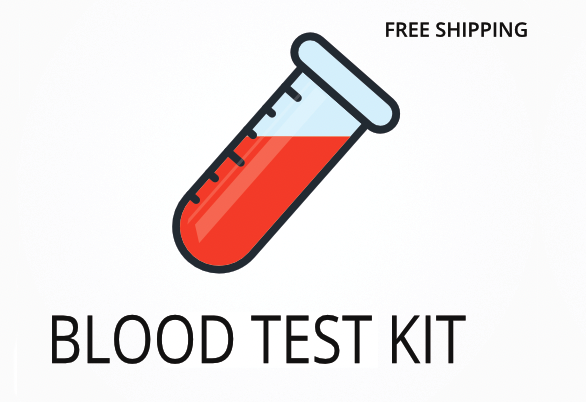| Test Name | Reference Range | Significance | High Levels of Allergix IgG4 Food Antibodies Bloodspot | Genova |
|---|---|---|---|
| Almond | <0.20 | Measures immune response to almond proteins. High levels may indicate sensitivity, which can cause digestive or skin symptoms after eating almonds. | High levels of almond mean your immune system is reacting to almond, which may cause symptoms like bloating or rashes. |
| Aspergillus Mold | <0.20 | Detects immune response to Aspergillus mold, which can be found in foods and the environment. High levels may relate to sinus or digestive symptoms. | High levels of Aspergillus mean your immune system is reacting to Aspergillus, possibly causing sinus or gut symptoms. |
| Beef | <0.20 | Assesses immune response to beef proteins. High levels may be linked to joint pain or digestive upset after eating beef. | High levels of beef mean beef may be causing immune-related symptoms. |
| Cantaloupe | <0.20 | Checks for immune response to cantaloupe. High levels may cause symptoms like itching or digestive upset after eating this fruit. | High levels of cantaloupe mean cantaloupe may be causing symptoms. |
| Cashew | <0.20 | Measures immune response to cashew proteins. High levels may be linked to skin or digestive symptoms after eating cashews. | High levels of cashew mean cashew may be a trigger for symptoms. |
| Chicken | <0.20 | Assesses immune response to chicken proteins. High levels may cause fatigue or digestive issues after eating chicken. | High levels of chicken mean chicken may be causing immune-related symptoms. |
| Corn | <0.20 | Detects immune response to corn. High levels may be linked to bloating, headaches, or skin issues after eating corn products. | High levels of corn mean corn may be a trigger for symptoms. |
| Crab | <0.20 | Measures immune response to crab proteins. High levels may cause digestive or skin symptoms after eating crab. | High levels of crab mean crab may be causing symptoms. |
| Egg, Whole | <0.20 | Assesses immune response to whole egg proteins. High levels may be linked to skin rashes, digestive upset, or headaches after eating eggs. | High levels of egg mean eggs may be a trigger for symptoms. |
| Garlic | <0.20 | Detects immune response to garlic. High levels may cause digestive or skin symptoms after eating garlic. | High levels of garlic mean garlic may be causing symptoms. |
| Lobster | <0.20 | Measures immune response to lobster proteins. High levels may be linked to digestive upset or skin reactions after eating lobster. | High levels of lobster mean lobster may be a trigger for symptoms. |
| Milk | <0.20 | Assesses immune response to milk proteins. High levels may cause bloating, skin rashes, or headaches after consuming milk or dairy products. | High levels of milk mean milk may be causing symptoms. |
| Mustard Seed | <0.20 | Detects immune response to mustard seed. High levels may be linked to digestive or skin symptoms after eating foods containing mustard. | High levels of mustard seed mean mustard seed may be a trigger for symptoms. |
| Oat | <0.20 | Measures immune response to oat proteins. High levels may cause digestive upset or skin issues after eating oats. | High levels of oat mean oats may be causing symptoms. |
| Orange | <0.20 | Assesses immune response to orange. High levels may be linked to digestive or skin symptoms after eating oranges. | High levels of orange mean orange may be a trigger for symptoms. |
| Peanut | <0.20 | Detects immune response to peanut proteins. High levels may cause digestive upset, skin rashes, or headaches after eating peanuts. | High levels of peanut mean peanuts may be causing symptoms. |
| Pea, Green | <0.20 | Measures immune response to green pea proteins. High levels may be linked to digestive or skin symptoms after eating green peas. | High levels of green pea mean green peas may be a trigger for symptoms. |
| Pinto Bean | <0.20 | Assesses immune response to pinto bean proteins. High levels may cause digestive upset or skin issues after eating pinto beans. | High levels of pinto bean mean pinto beans may be causing symptoms. |
| Pork | <0.20 | Detects immune response to pork proteins. High levels may be linked to digestive or skin symptoms after eating pork. | High levels of pork mean pork may be a trigger for symptoms. |
| Rice | <0.20 | Measures immune response to rice proteins. High levels may cause digestive upset or skin issues after eating rice. | High levels of rice mean rice may be causing symptoms. |
| Salmon | <0.20 | Assesses immune response to salmon proteins. High levels may be linked to digestive or skin symptoms after eating salmon. | High levels of salmon mean salmon may be a trigger for symptoms. |
| Shrimp | <0.20 | Detects immune response to shrimp proteins. High levels may cause digestive upset or skin rashes after eating shrimp. | High levels of shrimp mean shrimp may be causing symptoms. |
| Soybean | <0.20 | Measures immune response to soybean proteins. High levels may be linked to digestive or skin symptoms after eating soy products. | High levels of soybean mean soybeans may be a trigger for symptoms. |
| Strawberry | <0.20 | Assesses immune response to strawberry. High levels may cause digestive or skin symptoms after eating strawberries. | High levels of strawberry mean strawberries may be a trigger for symptoms. |
| Sunflower | <0.20 | Detects immune response to sunflower proteins. High levels may be linked to digestive or skin symptoms after eating sunflower seeds or oil. | High levels of sunflower mean sunflower may be a trigger for symptoms. |
| Tomato | <0.20 | Measures immune response to tomato proteins. High levels may cause digestive or skin symptoms after eating tomatoes. | High levels of tomato mean tomatoes may be a trigger for symptoms. |
| Tuna | <0.20 | Assesses immune response to tuna proteins. High levels may be linked to digestive or skin symptoms after eating tuna. | High levels of tuna mean tuna may be a trigger for symptoms. |
| Turkey | <0.20 | Detects immune response to turkey proteins. High levels may cause digestive or skin symptoms after eating turkey. | High levels of turkey mean turkey may be a trigger for symptoms. |
| Walnut, English | <0.20 | Measures immune response to English walnut proteins. High levels may be linked to digestive or skin symptoms after eating walnuts. | High levels of walnut mean walnuts may be a trigger for symptoms. |
| Wheat | <0.20 | Assesses immune response to wheat proteins. High levels may cause digestive upset, headaches, or skin rashes after eating wheat. | High levels of wheat mean wheat may be a trigger for symptoms. |
Medical Review Board
Reviewed by Jeff Donohue M.D. from Body Logic and Brady Hurst DC, CCCN. Written by True Health Lab’s team of editorial health contributors.
Disclaimer: This information is for educational purposes only and not intended as medical advice. Consult your healthcare provider for personalized guidance.
Why Customers Trust True Health Labs - What People are saying
Also rated 4.6 out of 5 based on 3452 ShopperApproved reviews- See all TrueHealthLabs.com reviews.







